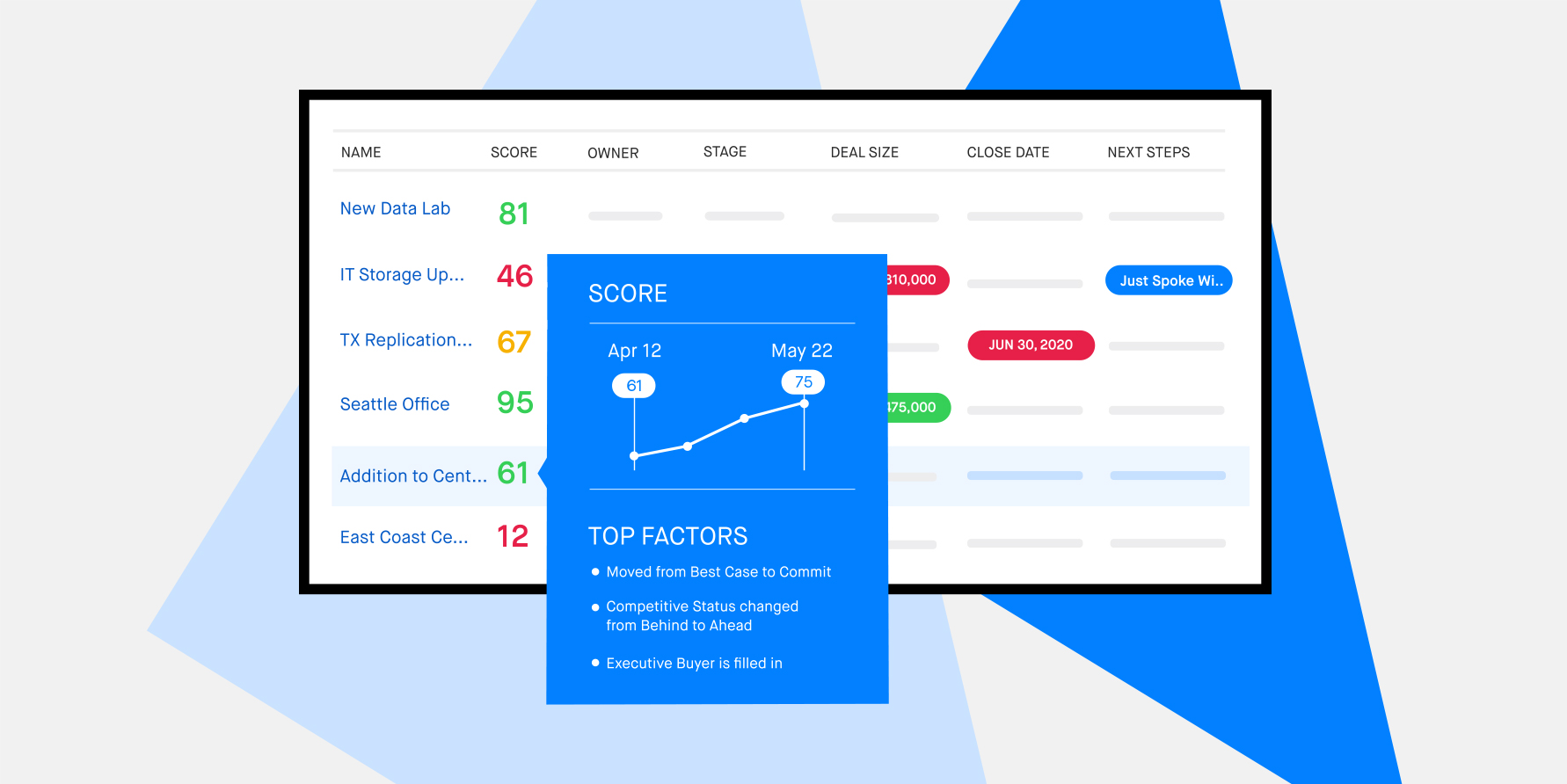A healthy sales pipeline is the lifeblood of any sales organization, and that health starts with effective pipeline management. Without it, your sales force might suffer from poor conversion and close rates, overly long sales cycles, or erratic and inaccurate sales forecasts.
Improving pipeline management, specifically through software and other digital tools, is crucial to any business success and growth. But not all sales software has what your business needs. Here are key features that make pipeline management software a must for sales teams looking to boost performance.
What is pipeline management software?
Sales pipeline management software refers to digital solutions that provide sales teams with better insight and visibility around their pipelines. These tools allow sales managers and reps to organize, track, monitor, and manage their opportunities, as well as streamline the overall sales process, for optimal success. Ideally, the pipeline management software is part of, or ladders up to, a holistic revenue operations platform that offers a full view of everything that impacts a company’s revenue.
Why do you need pipeline management software?
Without pipeline management software solutions, sales teams must rely on outdated spreadsheets and reps’ verbal reports to make important decisions. Manually entered data—the kind in pulled reports—misses important information, becomes quickly obsolete, and is prone to human error.
Software solutions automate time-intensive manual data entry, meaning that all critical information is captured and visible as a single source of truth. A new breed of pipeline management tools has emerged to support pipeline management and create a full picture of financial growth: Revenue platforms. These powerful tools bring together real-time data from across the revenue operations teams—sales, marketing and customer success—and apply AI analysis to produce deep sales insights. These insights can be used by the entire revenue operations team to tweak, coordinate, and maximize their performance.
Key features in your pipeline management software
Software solutions, especially revenue operations platforms, help sales teams manage the opportunities they are juggling in each sales pipeline stage.
To that end, there are four things any pipeline management solution should provide.
1. Trustworthy data and automation
Without high-quality data, there’s no sales pipeline visibility and no activity insights that allow you to spot at-risk deals early and act accordingly. Software should automate data collection to alleviate manual data entry into CRM, giving sales reps more time to sell, and reducing back-office operational costs. Clari is one example of how such a platform functions.
“Clari gives us a complete data set to analyze our business without the hassle of manually logging activities,” says Todd Sanders, the Chief Financial Officer of Planview.
Some of the data Clari automatically captures and analyzes includes:
- CRM: A pipeline and revenue operations software solution should sync all updates with CRM in real time so you have the most up-to-date, accurate information
- Email and calendar: The software should automatically capture sales activity data—such as email and calendar data from Microsoft Exchange, Office 365, or Gmail—for the most accurate activity info
- Contact updates and enrichment: This refers to the software’s ability to add new contacts based on reps’ sales activity, and auto-fill additional details like job title, company name, and employee count.
- Lead conversion: This is the ability to detect engagement with someone and automatically convert this person to a contact.
- Historical data: This refers to the ability to analyze years’ worth of the above data
2. Deeper revenue insights
If you’re digging through data or pulling custom-built reports from CRM, you’re not just wasting time, you’re losing valuable visibility and insight into each opportunity. These reports are failing you. With AI-driven sales analytics, you can review upside opportunities, pipeline coverage gaps, at-risk deals, accounts at risk of churning, and upsell potential.
"Clari has played an integral role in improving our revenue execution process,” says Kelly Steckelberg, the CFO of Zoom. “The rich data captured helps our direct sales team call their number with more confidence and accuracy.”
Your software solution should give you access to data such as:
- AI opportunity scoring
- AI opportunity score tuning
- Activity scoring
- Opportunity insights
- Opportunity risk assessment
- Pipeline progress inspection
- Global, historical pipeline changes
- Real-time update indicators
- Suggested pipeline coverage for future quarters
- Quarter-over-quarter status
- Rep activity insights
- Account engagement insights
3. Consistent execution
Consistency is key in the sales process. Everyone should use the same terminology and source of data truth to ensure accurate analysis. For software, purpose-built workflows and user experiences can streamline execution. Intuitive dashboards, alerts, and mobile experiences drive high adoption across the sales team, key to ensuring your software investment is worth the time and money to implement.
“Clari has provided our sales team with a common, unified view of our sales pipeline and activity, helping to drive our planning for current and future quarters against our revenue goals,” says Kevin Rubin, the CFO of Alteryx.
4. Predictable revenue
Predictable revenue sets the pulse for the entire business. But predictability doesn’t happen with manually pulled spreadsheets and ad-hoc reporting.
“In this environment of volatility, we need to see changes happening to our business as they occur so we can adjust. Clari gives us this lens to spot progress and risk with time to accelerate or pivot,” says Bill Losch, CFO of Okta. “The combination of current quarter progress and future quarter pipeline in Clari is a huge competitive advantage. It guides where we allocate resources and spend for future growth.”
Your pipeline management software should provide data such as:
- Real-time integration with CRM
- Forecast history tracking
- Flexible forecast architecture
- Customizable forecast time periods
- Multiple forecast capability
- Forecast aggregation
- Forecast KPIs
- Integration with deal-level insights
- Mobile forecasting
- Current quarter/month projection
- Historical comparisons
- Next-quarter projection
- Suggested pipeline coverage for future quarters
Managing your pipeline in today’s fast-paced business environment requires a software solution that can track your opportunities and provide deep, actionable insights to help you make smarter decisions. That’s where revenue operations platforms shine.
By automatically pulling in data from emails, calendars, campaigns and outreach from sales, marketing, and customer success teams, and analyzing that data with AI while comparing it to historical information, revenue operations platforms supercharge your pipeline management process and set your business up for continued success.
Further reading:
- Why Your Sales Team Needs Pipeline Management Training
- Everything You Need to Know About Your Pipeline Coverage Ratio
- How to Identify and Minimize Sales Pipeline Risk


